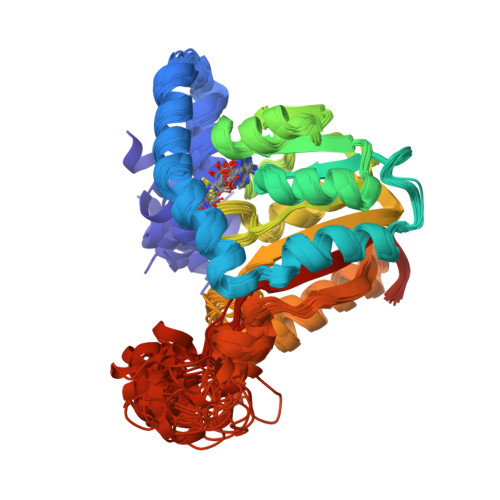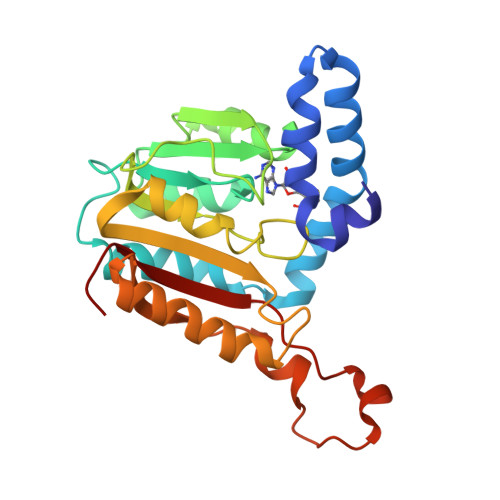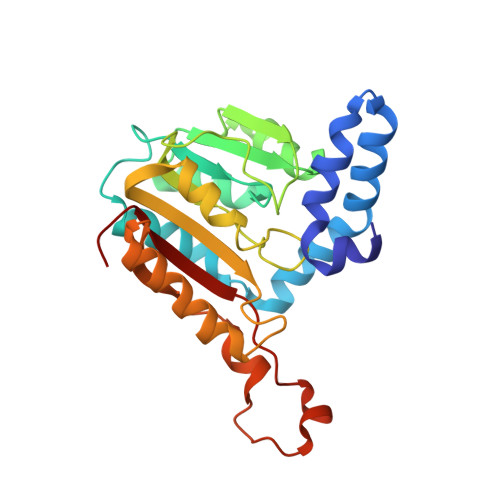Williams-Beuren Syndrome Related Methyltransferase WBSCR27: From Structure to Possible Function.
Mariasina, S.S., Chang, C.F., Navalayeu, T.L., Chugunova, A.A., Efimov, S.V., Zgoda, V.G., Ivlev, V.A., Dontsova, O.A., Sergiev, P.V., Polshakov, V.I.(2022) Front Mol Biosci 9: 865743-865743
- PubMed: 35782865
- DOI: https://doi.org/10.3389/fmolb.2022.865743
- Primary Citation of Related Structures:
7QCB, 7QCC - PubMed Abstract:
Williams-Beuren syndrome (WBS) is a genetic disorder associated with the hemizygous deletion of several genes in chromosome 7, encoding 26 proteins. Malfunction of these proteins induce multisystemic failure in an organism. While biological functions of most proteins are more or less established, the one of methyltransferase WBSCR27 remains elusive. To find the substrate of methylation catalyzed by WBSCR27 we constructed mouse cell lines with a Wbscr27 gene knockout and studied the obtained cells using several molecular biology and mass spectrometry techniques. We attempted to pinpoint the methylation target among the RNAs and proteins, but in all cases neither a direct substrate has been identified nor the protein partners have been detected. To reveal the nature of the putative methylation substrate we determined the solution structure and studied the conformational dynamic properties of WBSCR27 in apo state and in complex with S-adenosyl-L-homocysteine (SAH). The protein core was found to form a canonical Rossman fold common for Class I methyltransferases. N-terminus of the protein and the β6-β7 loop were disordered in apo-form, but binding of SAH induced the transition of these fragments to a well-formed substrate binding site. Analyzing the structure of this binding site allows us to suggest potential substrates of WBSCR27 methylation to be probed in further research.
Organizational Affiliation:
Faculty of Fundamental Medicine, M.V. Lomonosov Moscow State University, Moscow, Russia.

















